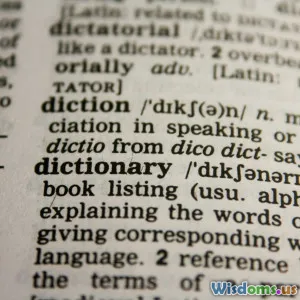
Twelve Proven Strategies for Improving ESL Reading Fluency
8 min read Discover twelve effective methods to boost ESL reading fluency and transform how learners engage with English texts. (0 Reviews)
Twelve Proven Strategies for Improving ESL Reading Fluency
Reading fluency, the ability to read text smoothly, accurately, and with appropriate expression, is a critical milestone for learners of English as a Second Language (ESL). Yet many ESL learners struggle with the challenge of making their reading not only accurate but also fluid and comprehensible. Imagine unlocking a rhythm while reading English texts—a rhythm that speeds comprehension, kindles enjoyment, and builds confidence in learners. How can educators and learners achieve this fluency breakthrough? This article delves into twelve scientifically supported strategies that have been proven effective in improving ESL reading fluency.
Understanding the Importance of Reading Fluency in ESL
Reading fluency bridges the gap between decoding words and understanding the meaning of sentences and stories. As Educational researcher Tim Rasinski emphasizes, "Fluency serves as a critical link between word recognition and comprehension." Without fluency, ESL learners often decode slowly without grasping the underlying message, leading to frustration and diminishing motivation.
Strategy 1: Extensive Reading with Graded Materials
Extensive reading is about encouraging learners to read large quantities of text at a comfortable level to develop automatic word recognition and fluency. Using graded readers calibrated to learners’ proficiency enables gradual fluency growth. For instance, a beginner might read simple, repeated sentence books, progressing toward young adult novels by Cambridge English graded readers.
Real-world data support this approach: studies such as those by Day and Bamford (1998) demonstrate gains in fluency and vocabulary when learners are immersed in extensive reading over time.
Strategy 2: Repeated Reading for Automaticity
Repeated reading involves learners reading the same text multiple times until they achieve a near-native speed and expression. This strategy dramatically improves fluidity. In a study by Samuels (1979), elementary ESL learners who practiced repeated reading showed increased reading speed and improved expression.
A practical classroom example: learners read a short story aloud three times across several days, each time focusing on speed, accuracy, and intonation.
Strategy 3: Modeling Fluent Reading
Hearing fluent reading modeled by a teacher or proficient reader can help learners internalize pacing and expression. Teachers might read paragraphs aloud with natural intonation, then have learners echo or shadow-read (reading simultaneously).
According to Rasinski (2012), "modeling fluency provides an auditory map that learners can imitate, helping them build appropriate phrasing and rhythm."
Strategy 4: Choral Reading to Build Confidence
Choral reading involves students reading together aloud in unison. This lowers the affective filter, reducing anxiety, while providing the scaffolding to practice pace and expression without fear of mistakes.
For example, ESL classes might read a poem or dialogue together multiple times to internalize rhythm and pronunciation.
Strategy 5: Incorporating Paired and Partner Reading
Partner reading pairs a more fluent reader with a less fluent one, allowing learners to listen and mimic fluent reading at their own pace. This peer-supported environment increases motivation and fluency practice frequency.
Research in ESL settings demonstrates that peer collaboration enhances fluency and comprehension—students learn in a social, engaging environment.
Strategy 6: Using Technology and Multimedia Tools
Digital platforms with text-to-speech features, audiobooks, and interactive reading apps offer valuable fluency practice outside the classroom. Tools like "Raz-Kids" or "Epic" provide learners with leveled texts and audio support.
Interactive features such as speed adjustment and highlighting words as audio plays help learners connect phonics and meaning, anchoring fluent reading.
Strategy 7: Vocabulary Building to Reduce Hesitation
Limited vocabulary causes learners to pause often, disrupting fluency. Systematic explicit instruction targeting high-frequency words, idioms, and academic vocabulary facilitates smoother reading.
An example is using flashcards or spaced repetition software (Anki) to build word recognition, allowing learners to process text more quickly.
Strategy 8: Teaching Phrasing and Expression
Reading fluency involves prosody—the rhythm, stress, and intonation of language. Explicit instruction in chunking phrases and appropriate expression improves natural reading flow.
Practices such as marking intonation patterns on texts or practicing dialogue mimicry foster intonational awareness.
Strategy 9: Encouraging Reading Aloud and Self-Recording
Encouraging learners to read aloud in and out of class develops muscle memory and confidence. Self-recording allows learners to track progress over time, identify strengths, and areas needing work.
In ESL programs using this method, measurable improvements in reading rate and prosody have been documented.
Strategy 10: Guided Oral Reading with Feedback
In guided oral reading sessions, teachers listen carefully as students read aloud and provide immediate corrective feedback, balancing encouragement and correction.
This method highlights errors before they become habitual and supports error-free reading to build fluent habits.
Strategy 11: Prediction and Previewing Text
Pre-reading strategies such as picture walkthroughs, prediction questions, and vocabulary previews prepare the learner’s mind for smoother decoding and meaning-making.
By activating background knowledge, learners are less likely to stumble over unfamiliar concepts, aiding fluent comprehension.
Strategy 12: Setting Specific, Measurable Fluency Goals
Finally, setting explicit, attainable fluency goals such as words correct per minute (WCPM) motivates learners and teachers alike. Progress toward goals can be tracked regularly.
For example, a learner might start reading at 60 WCPM and aim for 120 WCPM over several months, receiving praise and adjustments in materials accordingly.
Conclusion
Improving ESL reading fluency demands deliberate practice, varied instructional methods, and motivational support. The twelve strategies outlined above—from extensive reading and repeated practice to technology use and prosody instruction—combine to form a comprehensive framework for fluency development.
Educational experts and classroom experience alike affirm that fluency improves reading comprehension and overall language acquisition. Implementing these strategies effectively nurtures confident readers who engage meaningfully with English texts across academic, professional, and personal contexts.
Empower your ESL learners today by integrating these proven techniques, and witness the transformation that fluent reading brings—not only as a skill but as a joyful gateway to lifelong learning.
Rate the Post
User Reviews
Other posts in Teaching English as a Second Language (TESL)
Popular Posts
















